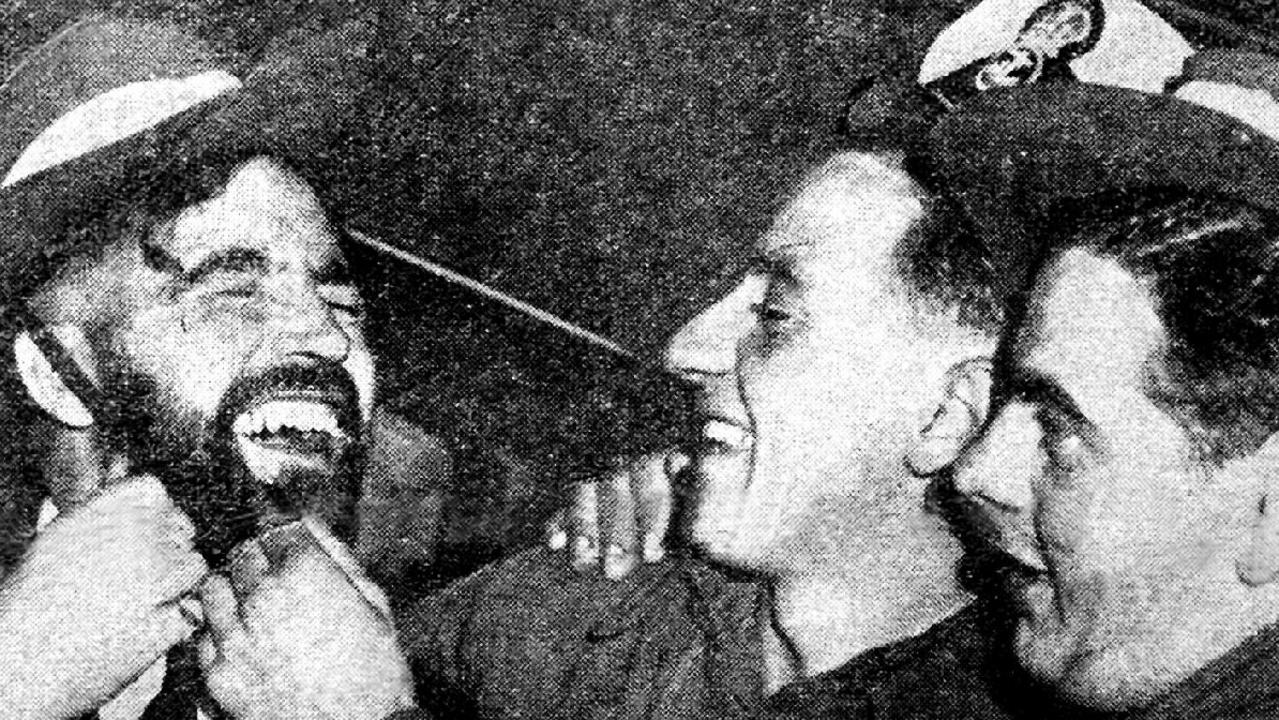The impact of the collapse of the State Bank on John Bannon’s legacy
IT is inevitable that on the occasion of his death, the State Bank collapse will figure large in the story of John Bannon. But he deserves a fairer and broader send-off, writes David Penberthy.

Opinion
Don't miss out on the headlines from Opinion. Followed categories will be added to My News.
- John Bannon, SA’s longest-serving Labor premier, dies
- ‘The best I could do was not good enough’
- Jory: The rare politician who cared little for self-interest
IT is inevitable that on the occasion of his death the State Bank collapse will figure large in the story of John Bannon.
Bannon deserves a fairer and broader send-off than this. He should be remembered first and foremost for his decency and humanity.
He was a gentle man in the true sense of the word. He was a level-headed political centrist who had no time for ideologues or rabblerousers, and who brought a polite managerialism to state politics and Labor Party politics.
It is a great pity that his generally good performance as premier — during which he oversaw some of the best times our state enjoyed — was marred by being at the helm when SA experienced its most calamitous financial disaster.
Not only should the State Bank collapse not define him, his actions in the lead-up to the catastrophe should be debated.
Bannon, in my view, was a victim of the times, the freewheeling late 1980s when the Bondys and the Skases were king. At the height of this laissez-faire period, the idea of a Labor premier with no business background telling the supposedly smart guys at the State Bank how to run their affairs is fanciful revisionism. Bannon would have been laughed out of town by the big end of town as some latter-day Salvador Allende, lecturing a bank about how to do business. The truth was, the bank had covertly run off its axis through bad borrowing practices, over which the government had no control. Bannon was more patsy than perpetrator of that $3.15 billion debacle.
The magnitude of the State Bank story obscures others from the Bannon era that deserve to be told. Indeed if not for that fiasco, Bannon would be remembered as a sound economic manager who shifted the ALP away from the social adventurism of the Dunstan era, and focused instead on the economic fundamentals. He knew SA was living on borrowed time as a manufacturing state and was desperate to grasp new opportunities in mining and create new jobs in the emerging information technology sector. Not only did he establish Olympic Dam, he stared down internal party dissent to champion uranium mining.
He set up the Adelaide Convention Centre and the Adelaide Casino. Controversially, he legalised poker machines, amid much private soul-searching over whether the social costs were eclipsed by the creation of new jobs, the salvation of a near-moribund pub and club sector, and a new revenue stream enjoyed by every other government (bar one) in the Commonwealth. He gave us what is arguably our greatest piece of architecture, the Bicentennial Conservatory, deftly persuading the parklands preservationists that it was the ideal and only location for such an audacious structure. He won the right to host the Grand Prix, only to see it eventually vanish eastwards due to the chicanery of Bernie Ecclestone.
One of his most contentious ideas was arguably his best, killed off by being two decades ahead of its time — a medium-density housing and business hub whereby people could live and work, connected by computers. The Multi-Function Polis became a byword for government wackiness; in fact, it predated the way we live and work in 2015.
Reclusive is too strong a word for the post-1992 John Bannon, who departed politics with a whimper and left Lynn Arnold to lead Labor into the abyss the following year. But he was close to being a recluse in a media sense. He refused almost all requests for interviews, busying himself instead as a historian at Flinders University, an adjunct professor at the University of Adelaide Law School, as Master of St Marks College. He never chose to defend his legacy, and seemed to accept that it was his lot in life to be remembered as “the State Bank premier”. It is possible that part of his shyness in later years stemmed from private anguish over whether he could have handled the matter differently. That would again point to his decency as a man. But he was never embittered by the episode, remaining a terrifically warm and well-balanced companion for those lucky enough to know him.
His latter years were marked by his recurring battle with cancer, which he faced with bravery and grace, refusing to let it stand in the way of his determination to spend time with family and friends, reading history and watching sport.
Family aside, Bannon was happiest sitting in the stand at the Adelaide Oval. His love of cricket is fabled, his knowledge of the game encyclopaedic. He played a vital role in persuading SACA traditionalists to swing behind the oval upgrade. On the day of a Test, Bannon could always be found sitting quietly in the members, chatting happily to the likes of our former prime minister John Howard, who held this former Labor premier in terrifically high esteem. Someone from the other side of the political divide, who came to know and respect the good man shining through. It is how we should all remember him.



